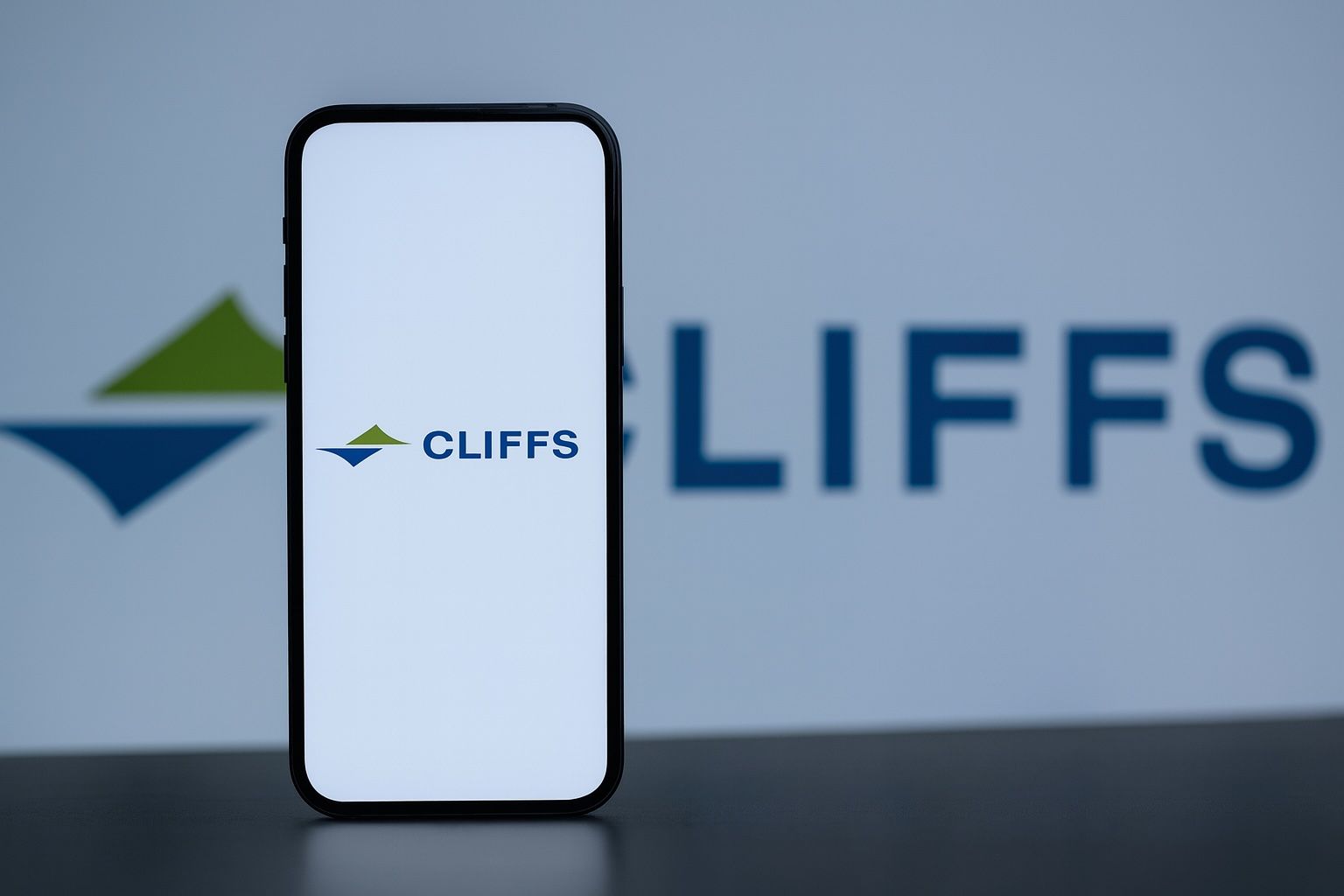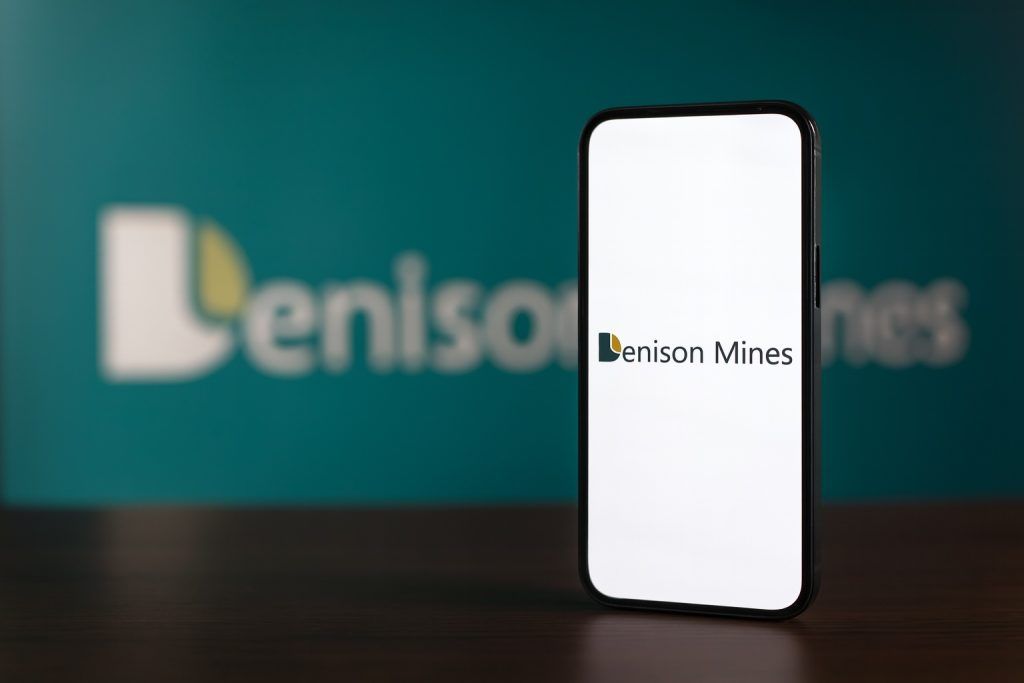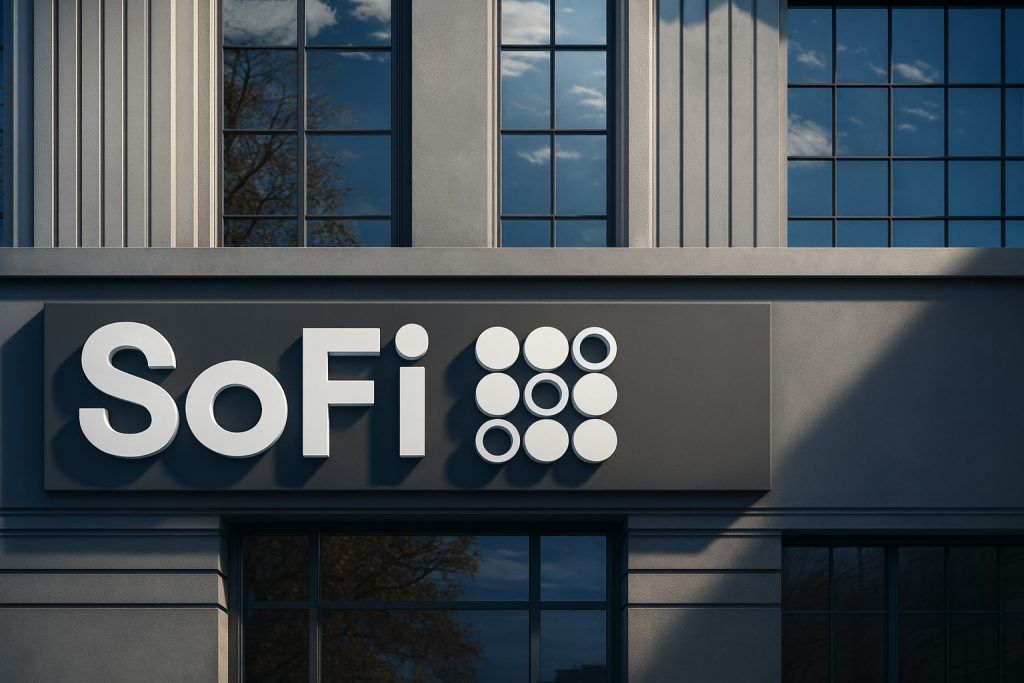- Stock Soars on Earnings News: Cleveland-Cliffs Inc. (NYSE: CLF) shares jumped nearly 20% on October 20, 2025 after the company’s Q3 earnings report and strategic announcements. The stock spiked as high as ~$16.50 intraday (a new 52-week high, +24%) before settling around $15.50 (still +16% on the day) [1] [2]. This rally brings CLF to about a 42% gain year-to-date [3], far outpacing the broader market and most peers.
- Q3 Revenue Up, But Losses Continue:Third-quarter 2025 sales rose 3.6% year-over-year to $4.73 billion (just shy of analysts’ ~$4.9 billion estimate) [4]. Strength in automotive steel demand (see below) helped offset softer pricing. Steel shipments hit 4.0 million tons, up from 3.8M a year ago [5]. Net loss was roughly -$0.45 per share (~$230 million), essentially flat vs. a year ago and in line with forecasts [6]. Management noted improved product mix and pricing, but profits remain pressured by high costs and debt.
- Tariffs Fuel U.S. Steel Demand: The company credited new 50% tariffs on imported steel – implemented by the Trump administration in early 2025 – for reviving domestic demand [7] [8]. CEO Lourenco Goncalves said the “new trade environment” has allowed Cleveland-Cliffs to win multi-year supply contracts with all major U.S. automakers [9]. With foreign steel effectively priced out, Cliffs’ U.S.-made automotive steel saw a “demand recovery” that bolstered Q3 sales [10]. The CEO called the U.S. “hostile territory for dumped steel from abroad” and noted Cliffs, as the only fully integrated American steel producer, is uniquely positioned to benefit [11].
- Rare-Earth Mining Plans Announced: In a surprise move, Cleveland-Cliffs unveiled plans to explore for rare-earth elements (REEs) at two of its iron ore mining sites (in Michigan and Minnesota) [12]. Geological surveys show “key indicators of rare-earth mineralization” at those locations [13]. Management says this initiative “aligns [Cliffs] with the broader national strategy for critical material independence” amid U.S. efforts to reduce reliance on China [14]. The CEO added that Cliffs “intends to be part of the solution” so that American manufacturing “doesn’t rely on China or any foreign nation for essential minerals” [15]. Investors cheered this potential new revenue stream, though it’s in early stages.
- Analyst Sentiment Mixed: Despite the stock’s surge, Wall Street remains cautious. The consensus rating is roughly Hold/Moderate Buy with an average 12-month price target around $11–12 – ~25% below the current price [16] [17]. Several analysts recently inched up targets (e.g. BofA to $14.50; Goldman Sachs to $14.50; JPMorgan to $13) but warn of risks [18] [19]. Many view Cliffs as a prime tariff beneficiary, but note that falling steel prices or a demand slowdown could squeeze margins [20]. High debt levels also temper optimism [21] [22]. Bulls are intrigued by the rare-earth foray and Cliffs’ automotive steel dominance, while bears point to its ongoing losses and the uncertainty of trade policy.
Q3 Earnings: Tariffs Drive Rebound in Steel Sales
Cleveland-Cliffs’ third-quarter 2025 results confirmed a boost in domestic steel demand thanks to protective tariffs. Revenue came in at $4.73 billion, up ~3.6% year-over-year [23], as shipments rose to 4.0 million tons of steel [24]. This was just below analyst forecasts (~$4.9B) and down slightly from Q2 levels [25], but a notable improvement from the stagnant volumes of late 2024. The company still posted a net loss (about -$0.45 per share on an adjusted basis) [26], similar to a year ago, indicating that while sales are growing, profitability remains challenged. CEO Lourenco Goncalves attributed the red ink partly to legacy cost pressures, but emphasized that new trade policies are driving a turnaround in Cliffs’ core market [27].
U.S. steel tariffs of 50% on imports – imposed in early 2025 – have effectively priced many foreign competitors out, especially in the automotive steel segment. “Our third quarter results marked a clear sign of demand recovery for automotive-grade steel made in the USA, and that is a direct consequence of the new trade environment implemented and enforced by the Trump Administration,” Goncalves stated [28]. He noted that “as a result of this new trade environment, we have won new and growing supply arrangements with all major automotive OEMs, locking in multi-year agreements” [29]. In other words, Detroit’s Big Three and other automakers have committed to buying more steel from Cleveland-Cliffs, now that cheaper imported steel faces hefty tariffs. These contracts are expected to ensure stable, long-term demand for Cliffs’ flat-rolled steel used in cars and trucks.
Cliffs reported that its product mix and pricing improved in Q3, with higher-margin automotive and electrical steels making up a larger share of sales [30]. This helped lift Adjusted EBITDA to $143 million (beating estimates) [31], even as raw shipment volume was slightly lower than the prior quarter. The company has also been tightening its belt on costs – management trimmed full-year 2025 capital spending plans to ~$525 million (from $600M) and SG&A expenses to ~$550M (from $575M) [32] [33]. This fiscal discipline is aimed at preserving cash, given Cliffs’ sizeable debt load and the fact that steel prices have started to moderate from last year’s highs [34]. Free cash flow was -$300 million in Q3 (a larger outflow than expected) [35], so Cliffs is keen to curb spending until profitability improves.
Notably, Cliffs also entered a new partnership in Q3: Goncalves revealed an MOU with a “major global steel producer” to leverage Cliffs’ U.S. manufacturing footprint [36]. While details are under wraps, he characterized the agreement as “highly accretive” to shareholders and enabled by Cliffs’ “unmatched U.S. footprint and trade-compliant operations.” [37]. Industry observers speculate this could involve Cliffs supplying or jointly operating facilities with a foreign steelmaker seeking a tariff-free way to serve the U.S. market. (Cliffs has hinted that for a foreign partner, “the opportunity to participate in the U.S. market through Cliffs is incredibly valuable” [38].) UBS is advising Cliffs on the potential transaction [39]. If this deal materializes, it could bolster Cliffs’ utilization rates or bring in new capital – a positive for the stock.
Overall, Q3’s takeaway is that tariffs are giving Cleveland-Cliffs a crucial lifeline. The company captured higher sales to domestic customers, especially automakers, even though it still operated at a loss. The U.S. automotive sector’s recovery (following supply chain issues and a resolved union strike in 2024) provided a demand bump that Cliffs is seizing. “Domestic demand has recovered for automotive-grade steel made in the USA,” Goncalves noted, “thanks to [the] new trade environment” [40] [41]. In short, protectionist trade policy has enabled Cliffs to gain market share at home, which is buying the company time to improve its cost structure and return to profitability.
Rare-Earth Minerals Pivot Sparks Investor Excitement
Perhaps the biggest surprise in Cleveland-Cliffs’ announcements was its foray into rare-earth minerals – a strategic pivot beyond steelmaking. Cliffs disclosed that it has been surveying its mining properties and identified two sites (one in Michigan and one in Minnesota) with promising signs of rare-earth element (REE) deposits [42]. These rare earths (like neodymium, dysprosium, etc.) are critical materials used in EV motors, wind turbines, electronics, and defense systems – markets expected to boom in the clean energy transition. Currently, China dominates global rare-earth supply, so any new domestic source is considered strategically important.
Management framed this move as both an opportunity and a patriotic duty. “Beyond steelmaking, the renewed importance of rare earths has driven us to re-focus on this potential opportunity at our upstream mining assets. It is our obligation to do so as a company with our geological footprint,” Goncalves said on the earnings call [43]. He noted that developing critical minerals in-house would “align Cleveland-Cliffs with the broader national strategy for critical material independence” [44] – echoing U.S. government goals to secure domestic supply chains for EVs and high-tech manufacturing. In another comment, he bluntly stated “American manufacturing shouldn’t rely on China or any foreign nation for essential minerals, and Cliffs intends to be part of the solution.” [45]
Investors greeted this rare-earth initiative as a potential “gold rush” catalyst. The idea that Cleveland-Cliffs could eventually produce rare-earth oxides (in addition to iron ore and steel) opens a new growth avenue. On Oct. 20, CLF’s stock rally was partly fueled by this news, as traders extrapolated that Cliffs might tap into lucrative federal incentives or partnerships tied to critical minerals [46] [47]. Notably, other U.S. mining stocks jumped earlier in October when China signaled tighter exports of certain rare earths [48]. Cliffs’ announcement appeared perfectly timed amid U.S.–China trade tensions: just as China restricts rare-earth supply, an American steelmaker declares its intent to find domestic sources. This narrative of “resource nationalism” resonated strongly in the market.
That said, experts urge some caution on this development. Cleveland-Cliffs is not yet actually producing any rare-earth materials – it has merely identified indications and will need to invest in exploration, proving out reserves, and potentially building processing capabilities. This is a long-term endeavor; any commercial rare-earth output (if viable) could be years away. “Investors shouldn’t get caught up in the rare earths hype,” cautioned The Motley Fool, noting that Cliffs’ mining operations historically serve its steel business and that REE mining “is all speculation at this point.” The stock’s fundamentals should still hinge on its steel performance, and “any forthcoming updates on the MOU [steel partnership] news should be more impactful” in the near term [49] [50]. In other words, the rare-earth story is exciting, but tangible results are uncertain – it’s essentially a call option on a new business.
Still, the mere pivot toward critical minerals has enhanced investor sentiment around Cliffs. It positions the company as a participant in the EV and defense supply chain narrative, potentially attracting interest (and maybe government support) outside the traditional steel investor base. If Cliffs can confirm viable rare-earth deposits and form a venture to develop them, it could eventually diversify its revenue beyond the cyclical steel market. In the meantime, management’s willingness to explore this avenue sends a signal that Cliffs is forward-looking and ready to capitalize on national policy priorities (just as it did with tariffs and automotive steel). This dual narrative – a tariff-fueled steel rebound plus a rare-earths “lottery ticket” – is a key reason CLF stock skyrocketed to new highs.
CLF Stock Price Surge and Recent Performance
Cleveland-Cliffs’ stock action in late October 2025 was nothing short of dramatic. Going into the earnings report, CLF shares were trading in the mid-$13 range. On October 20, as the Q3 news hit, the stock exploded upward, opening around $15.50 and ripping as high as $16.51 in heavy trading [51] [52]. It marked a fresh 1-year high (52-week high was $16.63) and the largest single-day gain for CLF in recent memory. By midday, the stock was still up ~16% at ~$15.5 [53], adding roughly $1.0–1.2 billion to Cliffs’ market capitalization in one day.
Trading volumes were massive – over 36 million shares changed hands, about 40% higher than typical [54] [55]. Options markets also saw a frenzy: traders snapped up call options on CLF at an unusual rate, with call volume ~30% above average on Oct. 20 [56]. This rush into calls (which profit if a stock rises) suggests bullish speculation was running high. Some short sellers likely rushed to cover positions as well, given the sudden upward spike.
Zooming out, Cliffs’ stock has been on an uptrend for most of 2025. After bottoming out around $5–6 per share in late 2024, CLF started climbing as steel markets stabilized. The year-to-date gain is now roughly +42% [57]. For comparison, Nucor (NUE) – the largest U.S. steel producer – is up about 17% YTD [58], and the S&P 500 is up around 12% YTD (for context). Cliffs’ outperformance reflects its rebound from a deeper trough; in 2022–23, CLF was hit harder due to automotive production cuts and high costs, whereas Nucor remained profitable. Now, with tariffs and auto demand as tailwinds, CLF is making up lost ground quickly.
In the past week specifically, CLF has skyrocketed. The stock was hovering near $13 on Oct. 16-17; by Oct. 20 it nearly touched $16.5. That’s about a 25% weekly jump. Even prior to earnings, CLF had rallied ~15% over the past month in anticipation of trade policy benefits and possibly takeover chatter (there was some speculative buzz, now moot, about Cliffs being an acquisition target after losing out on U.S. Steel). The current price around the mid-$15s is well above the stock’s 50-day moving average (~$11.65) and 200-day moving average (~$9.36) [59], indicating strong positive momentum in technical terms.
It’s worth noting that CLF stock is highly volatile, with a beta ~1.96 (nearly twice the market volatility) [60]. The company’s leverage and cyclical exposure mean big swings are common. At $15–16 per share, Cleveland-Cliffs is trading at about 8x forward EBITDA (on par with steel industry norms after recent target upgrades) [61]. However, its P/E is negative (no earnings) [62], so traditional valuation metrics look stretched unless one believes earnings will inflect positively in coming quarters.
For now, momentum is clearly on the bulls’ side. CLF not only rode a fundamental wave (tariffs + rare earth news) but also possibly benefitted from a bit of “fear of missing out” buying. The stock’s sharp rise and heavy options activity suggest some traders are betting the rally can continue in the short term. However, with shares now above many analysts’ targets and near a high, it will be important for Cliffs to deliver improving financial results in coming quarters to justify the optimism.
Analyst & Expert Commentary: Cautious Optimism
Wall Street’s reaction to Cleveland-Cliffs’ latest moves has been guarded optimism. Analysts recognize the positive impacts of tariffs and the intriguing rare-earth angle, but many are hesitant about the stock’s valuation and long-term challenges. As of this week, analyst coverage shows a mix of ratings – roughly 3 Buys, 5 Holds, and 2 Sells – giving a consensus rating around “Hold” (or at best Moderate Buy) [63]. The average 12-month price target is only about $11.93 per MarketBeat data [64] [65], which is significantly below the current ~$15+ share price. In other words, after the latest spike, Cliffs is trading 25-30% above what analysts, on average, think it’s worth.
Several brokerages have updated their outlooks in light of Q3 results:
- KeyBanc Capital upgraded CLF in the summer, from Sector Weight to Overweight ($14 target), seeing improving fundamentals and the tariff catalyst [66]. Now that the stock is above $14, their call looks prescient, though $14 now appears a conservative goal.
- JPMorgan recently raised its target from $10 to $13 (Neutral) ahead of earnings [67], acknowledging the tariff benefits but not ready to endorse outperformance. JPM still rates Cliffs a hold, implying the upside is priced in.
- Goldman Sachs on Oct. 9 lifted its target to $14.50 and reiterated a Buy rating [68]. Goldman’s analyst was one of the more bullish voices, arguing that Cliffs’ integrated model and any strategic moves (like the mining pivot or a potential JV from the MOU) could unlock value. However, with CLF now trading around the mid-$15s, even Goldman’s revised target has been overtaken by events.
- BofA Securities likewise boosted its target from $12.50 to $14.50 (Neutral) on Oct. 20 [69]. BofA noted that Q3 EBITDA beat expectations on better prices/mix [70], and it raised valuation multiples for Cliffs to be more in line with peers [71]. However, BofA kept a Neutral stance, flagging Cleveland-Cliffs’ high debt relative to competitors as a key concern [72] [73]. Essentially, they see Cliffs as fairly valued around mid-teens unless debt is reduced or earnings accelerate.
- On the bearish side, Morgan Stanley bumped its target to only $10.50 (Equal-Weight) over the summer [74], and independent rater Weiss kept a “sell” rating (graded D) as of early October [75]. These skeptics highlight that Cliffs is still losing money, and that the steel cycle could weaken. Some also worry that if the political winds shift (e.g. tariffs roll back or a pro-trade administration comes in later on), Cliffs could be caught flat-footed.
The key debate among analysts is whether CLF’s recent boost is sustainable or fleeting. Many acknowledge short-term positives: “Cliffs is clearly a beneficiary of tariffs,” one commentary noted, but “if steel prices fall or demand falters, profits could come under pressure ahead.” [76] There’s also an undercurrent of concern about the cyclicality of auto demand – if high interest rates or EV transitions slow car sales in 2026, for example, Cliffs’ new OEM contracts might deliver less volume than hoped.
From an investment strategist perspective, some advise not to chase the hype blindly. The Motley Fool, for instance, reminded readers that Cliffs’ rare-earth venture is speculative, and the core business – steel – should drive the valuation. They suggest focusing on how the new steel partnership (MOU) might play out and how effectively Cliffs can improve its balance sheet [77] [78]. On the other hand, trading experts have pointed out the stock’s strong momentum. “CLF’s rally tops the S&P 500 – can it continue?” read one market brief [79], noting bullish option bets being placed. There’s a bit of FOMO sentiment after such a big one-day jump; some short-term traders likely see further upside if positive headlines persist.
In summary, analysts’ sentiment is cautiously optimistic but split. The bull case they outline is that Cleveland-Cliffs is uniquely positioned: it has cemented a dominant role in U.S. automotive steel under tariff protection, and it’s agile in seizing new opportunities (like REEs). If tariffs remain in place and auto production stays robust, Cliffs could start turning quarterly profits again, and any success in rare-earth mining would be icing on the cake. A few optimists even speculate Cliffs’ assets could attract an acquirer at some point, given global interest in U.S. steelmaking capacity (Cliffs itself tried to be a consolidator, more on that below). The bear case is that Cliffs is running hot on hype: the company is highly leveraged, still has negative earnings, and is now valued richer than proven peers. If the macro environment turns or if the political regime changes, CLF’s gains could evaporate as quickly as they came. Thus, many pros are advising investors to stay balanced – acknowledge Cliffs’ improvements, but keep expectations in check.
Industry Context: Cliffs vs. Nucor vs. U.S. Steel
Cleveland-Cliffs operates in the highly cyclical steel industry, where trends in global supply, trade policy, and end-use demand all influence performance. To better understand CLF’s position, it helps to compare it to two key rivals: Nucor Corporation (NUE) and United States Steel Corp. (U.S. Steel).
Nucor is the largest U.S. steel producer by tonnage and a leader in “mini-mill” steelmaking using electric arc furnaces (EAFs). Nucor’s business model (recycling scrap into steel) contrasts with Cleveland-Cliffs’ integrated model (mining iron ore and using blast furnaces). This means Nucor generally has a more flexible cost structure and was solidly profitable even during recent steel downturns, whereas Cliffs has higher fixed costs but can produce certain high-end steels (like electrical and automotive grades) that EAFs historically couldn’t. In 2025, Nucor has continued to post profits, though at lower levels than the 2021 boom. In fact, Nucor warned that Q3 2025 profits would be leaner across all segments versus earlier quarters [80], due to moderating steel prices and margins. Its stock has risen modestly (+17% YTD) but did not see a huge jump in October, reflecting more tempered expectations. When Nucor released its earnings (around late October), the stock’s reaction was relatively muted – a small uptick rather than a CLF-style pop [81]. This highlights how Cleveland-Cliffs’ narrative is somewhat unique right now. Cliffs had been an underdog stock trading at distressed levels; with the tariff and rare-earth news, it saw an outsized percentage move. Nucor, already valued for steady performance, didn’t have similar “game-changing” headlines and thus its shares remain steadier.
Strategically, both Cliffs and Nucor benefit from U.S. protectionist policies, but perhaps in different ways. Cliffs gains a competitive edge in its core market (automotive sheet steel) since imports from abroad are now exorbitantly expensive with a 50% tariff. This allowed Cliffs to grab contracts that might have otherwise gone to European or Asian mills. Nucor also benefits from tariffs because it sells a lot of steel domestically (rebar, beams, plate, etc.), but Nucor was already competitive globally due to low costs. In fact, Nucor’s CEO recently commented that even with tariffs, market fundamentals like demand and scrap prices drive their outlook more. One point of comparison: Cliffs’ stock is up ~42% YTD, whereas Nucor’s stock is up ~17% YTD [82] – suggesting investors see Cliffs as having more to gain (or more to prove) under current conditions. It’s also worth mentioning another mini-mill peer, Steel Dynamics (STLD), whose stock is up around 10% YTD (indicative of the broader steel sector’s moderate performance compared to Cliffs).
Now, U.S. Steel is a more complicated story. As of October 2025, U.S. Steel is no longer an independent public company – it was acquired by Japan’s Nippon Steel in a $14.9 billion deal that closed in June 2025 [83] [84]. This takeover followed a dramatic saga in 2023-2024 where Cleveland-Cliffs itself made a hostile bid to merge with U.S. Steel. Cliffs was very eager to combine with its historic rival to create a domestic steel champion, and it had the backing of the United Steelworkers (USW) union (which had contractual leverage favoring a Cliffs deal). However, U.S. Steel’s board rebuffed Cliffs’ offer and instead entertained multiple suitors, including foreign ones. Finally, Nippon Steel – already a minority joint venture partner with U.S. Steel in an Alabama mill – emerged as the winner by early 2025. The Biden Administration initially blocked Nippon’s purchase on national security grounds in January 2025 [85], but that decision was later reversed or overcome (perhaps by the new administration or via legal avenues), and the deal went through mid-year, albeit amid controversy. Cliffs and the USW fought hard against U.S. Steel’s foreign sale – Cliffs’ CEO Goncalves and the union even filed claims to block it – but by September 2025 they settled all disputes with Nippon [86]. In the settlement, Cliffs dropped its objections once it was clear Nippon’s ownership would proceed [87].
So what does this mean for the competitive landscape? Cleveland-Cliffs now stands as the largest U.S.-headquartered integrated steelmaker, while U.S. Steel’s operations (like its mills in Pennsylvania, Michigan, etc.) are under the umbrella of Nippon Steel, a global giant. From Cliffs’ perspective, one major domestic competitor is effectively in foreign hands – but importantly, those U.S. Steel plants are still subject to the same U.S. trade policies. They produce steel in America, so they too benefit from tariffs on imports. Nippon Steel has pledged to continue operating and investing in U.S. Steel’s facilities, so U.S. Steel (under Nippon) remains a competitor in automotive and tinplate steels. However, some analysts think that being foreign-owned could limit U.S. Steel’s political leverage or willingness to engage in price-undercutting in the current tariff environment. Goncalves has hinted that Cliffs’ unique status as an American-integrated player gives it an edge in winning patriotism-driven contracts and perhaps government support. For example, if U.S. automakers prefer a fully domestic supply chain (especially for any federally backed EV programs), Cliffs might have an inside track versus U.S. Steel/Nippon. Additionally, Cliffs’ new MOU could possibly involve Nippon Steel or another foreign firm partnering instead of competing – though that’s speculative.
In summary, Cliffs vs. Nucor vs. U.S. Steel breaks down as follows:
- Cliffs – Integrated producer (ore to finished steel), focused on auto, electrical, stainless, and plate steels, heavily unionized workforce. Advantages: now benefiting hugely from tariffs, strong ties to auto industry (9 dedicated galvanizing lines for autos) and raw material self-sufficiency. Disadvantages: higher cost base, high debt, currently unprofitable, very exposed to auto cycle and policy changes.
- Nucor – Mini-mill producer, focused on long products, sheet via EAFs, and downstream steel products, non-union. Advantages: low-cost, flexible production, consistently profitable, diversified product line. Disadvantages: doesn’t produce certain specialized steels as much (though it’s entering auto sheet via newer mills), less directly boosted by tariffs (since it already was competitive), growth is steady but not explosive.
- U.S. Steel (Nippon) – Integrated legacy producer, focused on auto, tinplate (cans), and tubular (oil pipes), union workforce. Now part of a foreign conglomerate. Advantages: similar capabilities to Cliffs in some areas (auto sheet, etc.), Nippon’s backing might bring technology and capital. Disadvantages: integration into Nippon may bring changes; not U.S.-controlled which could be a factor for government or union-favored deals; was struggling financially before buyout.
All are navigating an environment where U.S. tariffs and Buy America policies favor domestic production. Steel prices, however, have been off their 2021 peak highs; hot-rolled coil (HRC) prices in 2025 have been moderate, which squeezes margins industry-wide. Cliffs actually commented that it’s seeing steel prices “starting to moderate” [88], which is a polite way of saying prices aren’t rising much further. Nucor’s guidance corroborated that – lower earnings forecast as steel pricing and demand normalize from the post-pandemic surge [89]. Global factors (like China’s economy slowing, and Europe’s energy costs) also affect steel demand and trade flows. In this context, Cliffs’ fortunes are unusually tied to domestic U.S. policy: tariffs effectively set a floor under U.S. steel prices above world market levels. If those tariffs remain for an extended period (and especially at 50%, which is quite high), Cliffs and other U.S. steelmakers have a protected sandbox to operate in, potentially long enough to fix their houses and thrive. If the tariffs were removed or reduced, Cliffs would once again face intense competition from imports and likely struggle unless it had significantly lowered costs or differentiated its products.
In the near term, Cleveland-Cliffs seems to have the upper hand in its niche (auto steel) thanks to the trade boost and its aggressive moves (like courting foreign partners through the MOU, and venturing into minerals). Nucor remains a formidable competitor but largely in other segments of steel; its stability is a contrast to Cliffs’ high-beta swings. The ghost of U.S. Steel looms in the background; while Cliffs didn’t get to acquire U.S. Steel, it may indirectly benefit if Nippon Steel takes a careful approach that avoids price wars. Additionally, Cliffs no longer has to worry about diluting its own stock or piling on debt for that acquisition – a silver lining to having lost that bidding war.
Outlook and Forecast: Bullish Potential vs. Risks Ahead
After the recent developments, what’s the road ahead for Cleveland-Cliffs and its investors? The outlook for CLF will hinge on a few critical factors going into 2026:
1. Trade Policy & Tariffs: The single biggest swing factor is the fate of the steel tariffs. As of now (late 2025), the 50% import tariff is firmly in place – a cornerstone of the Trump Administration’s trade policy. If these tariffs remain through 2026, Cliffs should enjoy a continued home-field advantage. It will likely be able to keep U.S. steel prices at a premium and maintain the new contracts it has won from domestic customers. This underpins the bull case: stable or rising volumes to automakers, better capacity utilization, and potentially a return to profitability in 2026. However, any change on this front could be a game-changer. If geopolitical negotiations or domestic pressures lead to a rollback of tariffs, Cliffs could suddenly face cheaper imports flooding back in. It’s worth recalling that trade policy can be unpredictable – it could even tighten further (some officials have floated extending tariffs to downstream products or maintaining them longer [90]), or conversely, could be eased if inflation or international relations become concerns. Investors should monitor Washington closely. At least for the next year, though, the tariff regime appears set, which is a positive tailwind for Cliffs.
2. Steel Demand – Especially Automotive: Cliffs’ heavy exposure to the auto industry means it is somewhat reliant on car production volumes. The recent multi-year deals with Ford, GM, Stellantis, etc., suggest Cliffs will be supplying a lot of steel for new vehicle models (including EVs which require specialty electrical steels that Cliffs produces). The outlook for auto demand in 2026 looks cautiously optimistic: the supply-chain issues have eased, and pent-up consumer demand from the chip shortage years could support sales, though high interest rates are a headwind for car financing. If U.S. vehicle production holds up or grows, Cliffs will see solid orders. Additionally, the push for electric vehicles and infrastructure (in part due to the 2022 Inflation Reduction Act incentives) may boost demand for Cliffs’ electrical steels and heavy plate (used in chargers, etc.). The bearish scenario would be a recession or consumer pullback that forces automakers to cut output – that would directly hit Cliffs’ volume and pricing power. So far, that doesn’t appear imminent, but it’s a risk on the horizon given rising economic uncertainties into 2026.
3. Execution on Cost and Debt Reduction: Cliffs’ management has pledged cost-saving initiatives and scaled back spending, as noted earlier. Delivering on those promises will be key to improving margins. The company is targeting about $300 million in annual cost savings from operational efficiencies by Q4 2025 [91]. Meeting or exceeding that could help swing toward breakeven or profit. Furthermore, Cliffs carries substantial debt (debt-to-equity ratio ~1.28 as of Q3) [92]. In rising rate environments, interest costs are non-trivial. The company did opportunistically refinance some debt – for example, issuing $275M of new notes due 2034 in October [93] – but overall leverage remains high. Paying down debt (perhaps using any future positive free cash flow) would greatly strengthen Cliffs’ position. Analysts like BofA explicitly cite the debt load as a reason for Neutral ratings [94]. If Cliffs can, over the next year, show progress in debt reduction or improving its credit metrics, sentiment might turn more bullish on its equity. Conversely, if cash burn continues and debt stays elevated, the stock could be vulnerable if credit markets tighten.
4. Rare Earths and New Ventures: In the medium term, investors will be eager for any follow-through on the rare-earth exploration. Cliffs will likely conduct more detailed geological studies at the two identified sites in 2026. Any confirmation of economically viable rare-earth reserves could be a game-changer, potentially attracting partner companies or government grants. Even the perception of progress here can buoy the stock – for instance, if Cliffs announces a pilot project or a partnership with a tech firm or Defense Dept. for REE extraction, it would add to the growth narrative. On the other hand, if months go by with no news, the initial excitement could fade. It’s worth noting that mining rare earths would be a new undertaking for Cliffs, potentially requiring new expertise and capital. Shareholders will want to see that this project is pursued prudently and does not become a money pit. Analysts generally are not yet baking any rare-earth revenue into forecasts (too early-stage), so it remains a free upside option. Similarly, the outcome of the mysterious MOU with a global steel producer is another wildcard. If that evolves into a concrete joint venture or equity investment, it could be “highly accretive” as management claims [95] – perhaps bringing in cash or new technology. Cliffs has said it expects to share more on this development soon [96]; any such announcement could move the stock either way, depending on terms.
5. Competitive Moves: With U.S. Steel now under Nippon, one less major competitor is fighting for the same assets – but it also means a well-capitalized foreign player is in the mix. Cliffs might refocus its M&A sights elsewhere (e.g. smaller targets or downstream assets). In 2024 it bought Stelco (Canada) [97], so integration of that could continue to yield synergies. We should watch if Cliffs pursues any additional acquisitions or divestitures. Sometimes companies with high debt look to sell non-core assets; Cliffs could potentially monetize some infrastructure or minority stakes to raise cash. Alternatively, given the strategic value of steel, it’s not inconceivable an outside entity could make a play for Cliffs itself (though the U.S. government would scrutinize any foreign bid due to Cliffs’ importance). Those are low-probability events but part of the long-term backdrop.
Market sentiment on CLF in coming months will likely hinge on the factors above. Current forecasts from analysts see Cleveland-Cliffs remaining somewhat volatile. According to consensus, full-year 2025 will end with a net loss (roughly -$0.79 EPS) [98], but 2026 could swing to a small profit if conditions hold. The average 1-year price target around $11–12 implies analysts expect the stock to pull back from its post-earnings highs [99] [100]. This conservative view is anchored in the idea that Cliffs’ rally may have gotten ahead of fundamentals. For the stock to justify ~$16+ sustainably, Cliffs likely needs to show a clear path to positive earnings and cash flow, or additional growth drivers. Bulls argue that as Q4 and early 2026 numbers roll in, the benefits of the new contracts and cost cuts will become evident, potentially leading analysts to raise estimates. Additionally, if steel prices surprise to the upside (say, due to an infrastructure spending boost or further trade actions), earnings could overshoot expectations.
On balance, the sentiment can be characterized as a cautious optimism: there are strong reasons to be hopeful (tariff-protected market, improving demand, visionary side-bets on minerals), but also clear risks (policy dependence, high debt, execution challenges). Investors should keep an eye on political news and commodity trends as much as on Cliffs’ quarterly reports.
In conclusion, Cleveland-Cliffs has staged an impressive comeback in 2025, with its stock price surging on a combination of old-fashioned steel protectionism and new-age resource ambitions. The company’s immediate future looks brighter than it did a year ago – it’s growing revenue, securing customers, and thinking outside the box. However, the stock’s recent spike also means much of that good news is now priced in. Going forward, the upside vs. downside will largely depend on whether Cliffs can convert today’s advantages into tangible financial gains. If the favorable trade climate persists and Cliffs executes well (all while possibly uncovering a treasure in its mines), CLF stock could have further to run, rewarding those bullish on America’s steel resurgence. If, however, the winds shift – be it in the economy or policy – investors may find that this cyclical stock still has its share of twists and turns ahead. As always, due diligence and a close watch on upcoming developments are warranted. For now, Cleveland-Cliffs has given Wall Street plenty to talk about, and it will be fascinating to see how this steelmaker-turned-resource-player navigates the next chapters of its evolving story [101].
Sources: Official Cleveland-Cliffs Q3 2025 earnings release [102] [103]; TS² news analysis on CLF’s tariff and rare-earth announcements [104] [105]; Bloomberg Law on Cliffs’ rare-earth exploration [106]; Reuters coverage of U.S. Steel’s acquisition by Nippon Steel [107] [108]; MarketBeat and Investing.com analyst updates (JPMorgan, BofA, Goldman) [109] [110]; The Motley Fool and Yahoo Finance commentary on CLF’s stock reaction [111] [112]; and other financial news outlets as cited above. All information is current as of Oct. 20, 2025. [113] [114]
References
1. ts2.tech, 2. www.marketbeat.com, 3. ts2.tech, 4. ts2.tech, 5. ts2.tech, 6. ts2.tech, 7. ts2.tech, 8. ts2.tech, 9. www.clevelandcliffs.com, 10. www.clevelandcliffs.com, 11. www.clevelandcliffs.com, 12. ts2.tech, 13. www.clevelandcliffs.com, 14. ts2.tech, 15. www.clevelandcliffs.com, 16. ts2.tech, 17. www.marketbeat.com, 18. www.marketbeat.com, 19. www.marketbeat.com, 20. ts2.tech, 21. www.investing.com, 22. www.investing.com, 23. ts2.tech, 24. ts2.tech, 25. www.clevelandcliffs.com, 26. ts2.tech, 27. www.clevelandcliffs.com, 28. www.clevelandcliffs.com, 29. www.clevelandcliffs.com, 30. www.clevelandcliffs.com, 31. www.investing.com, 32. ts2.tech, 33. ts2.tech, 34. ts2.tech, 35. www.investing.com, 36. www.clevelandcliffs.com, 37. www.clevelandcliffs.com, 38. www.clevelandcliffs.com, 39. www.clevelandcliffs.com, 40. ts2.tech, 41. ts2.tech, 42. www.clevelandcliffs.com, 43. www.clevelandcliffs.com, 44. ts2.tech, 45. www.clevelandcliffs.com, 46. ts2.tech, 47. ts2.tech, 48. ts2.tech, 49. finviz.com, 50. finviz.com, 51. www.marketbeat.com, 52. www.marketbeat.com, 53. ts2.tech, 54. www.marketbeat.com, 55. www.marketbeat.com, 56. www.marketbeat.com, 57. ts2.tech, 58. finance.yahoo.com, 59. www.marketbeat.com, 60. www.marketbeat.com, 61. www.investing.com, 62. www.marketbeat.com, 63. www.marketbeat.com, 64. www.marketbeat.com, 65. www.marketbeat.com, 66. www.marketbeat.com, 67. www.marketbeat.com, 68. www.marketbeat.com, 69. www.investing.com, 70. www.investing.com, 71. www.investing.com, 72. www.investing.com, 73. www.investing.com, 74. www.marketbeat.com, 75. www.marketbeat.com, 76. ts2.tech, 77. finviz.com, 78. finviz.com, 79. www.marketbeat.com, 80. www.recyclingtoday.com, 81. ts2.tech, 82. finance.yahoo.com, 83. www.reuters.com, 84. www.reuters.com, 85. en.wikipedia.org, 86. www.reuters.com, 87. www.reuters.com, 88. ts2.tech, 89. www.recyclingtoday.com, 90. ts2.tech, 91. www.fool.com, 92. www.marketbeat.com, 93. www.clevelandcliffs.com, 94. www.investing.com, 95. www.clevelandcliffs.com, 96. www.clevelandcliffs.com, 97. tracxn.com, 98. www.marketbeat.com, 99. ts2.tech, 100. www.marketbeat.com, 101. ts2.tech, 102. www.clevelandcliffs.com, 103. www.clevelandcliffs.com, 104. ts2.tech, 105. ts2.tech, 106. ts2.tech, 107. www.reuters.com, 108. www.reuters.com, 109. www.marketbeat.com, 110. www.investing.com, 111. finviz.com, 112. finviz.com, 113. ts2.tech, 114. www.marketbeat.com







